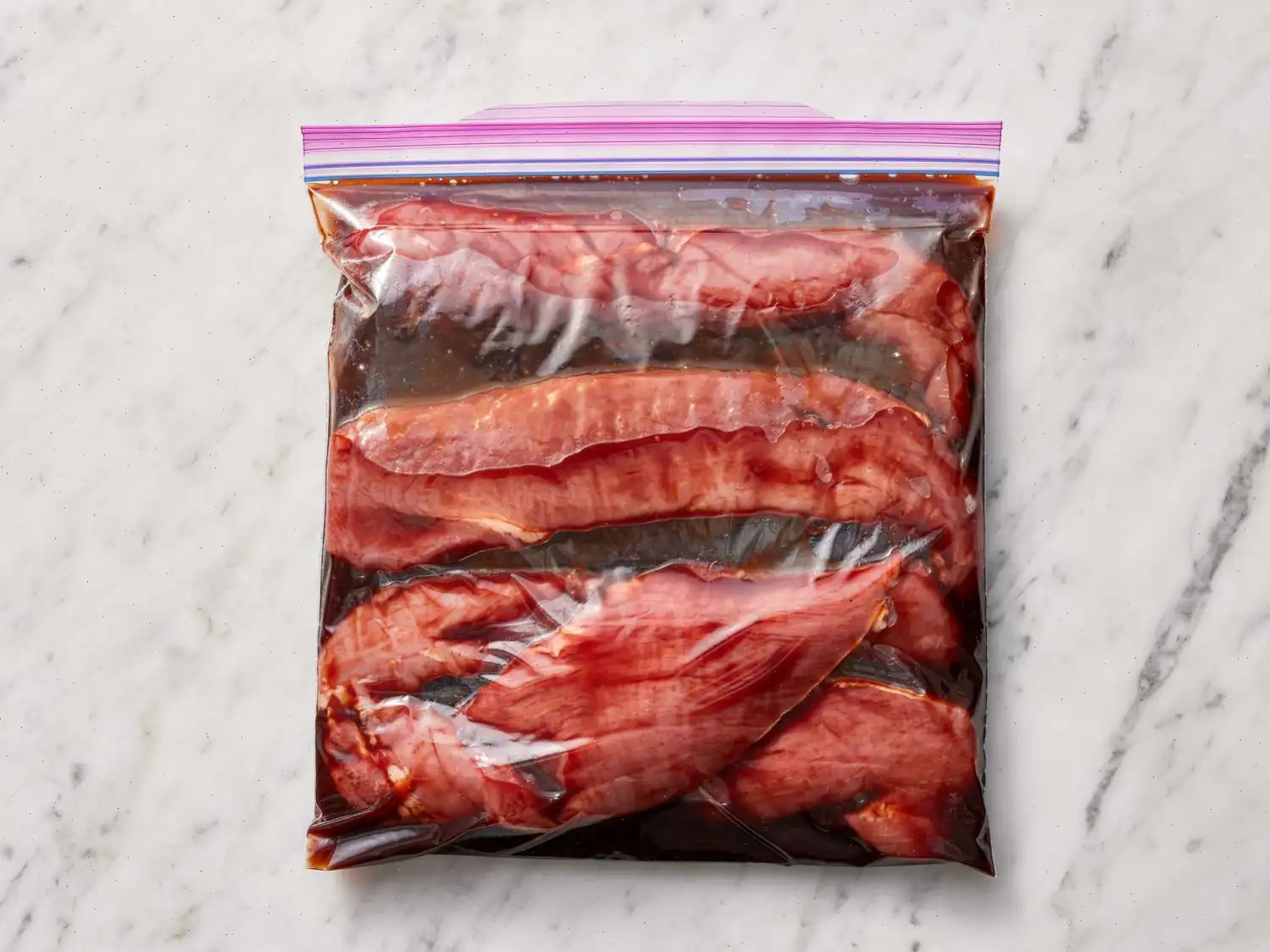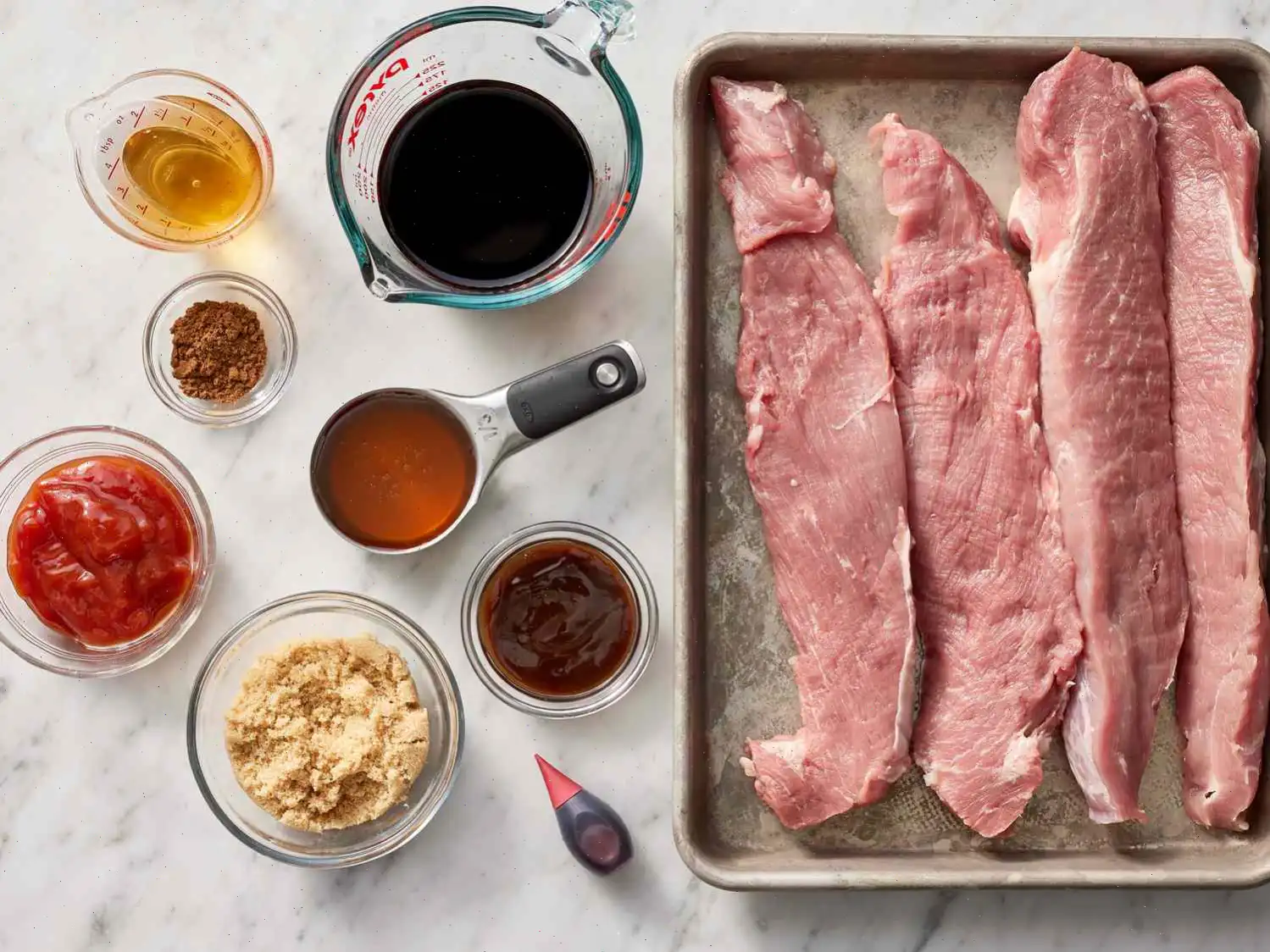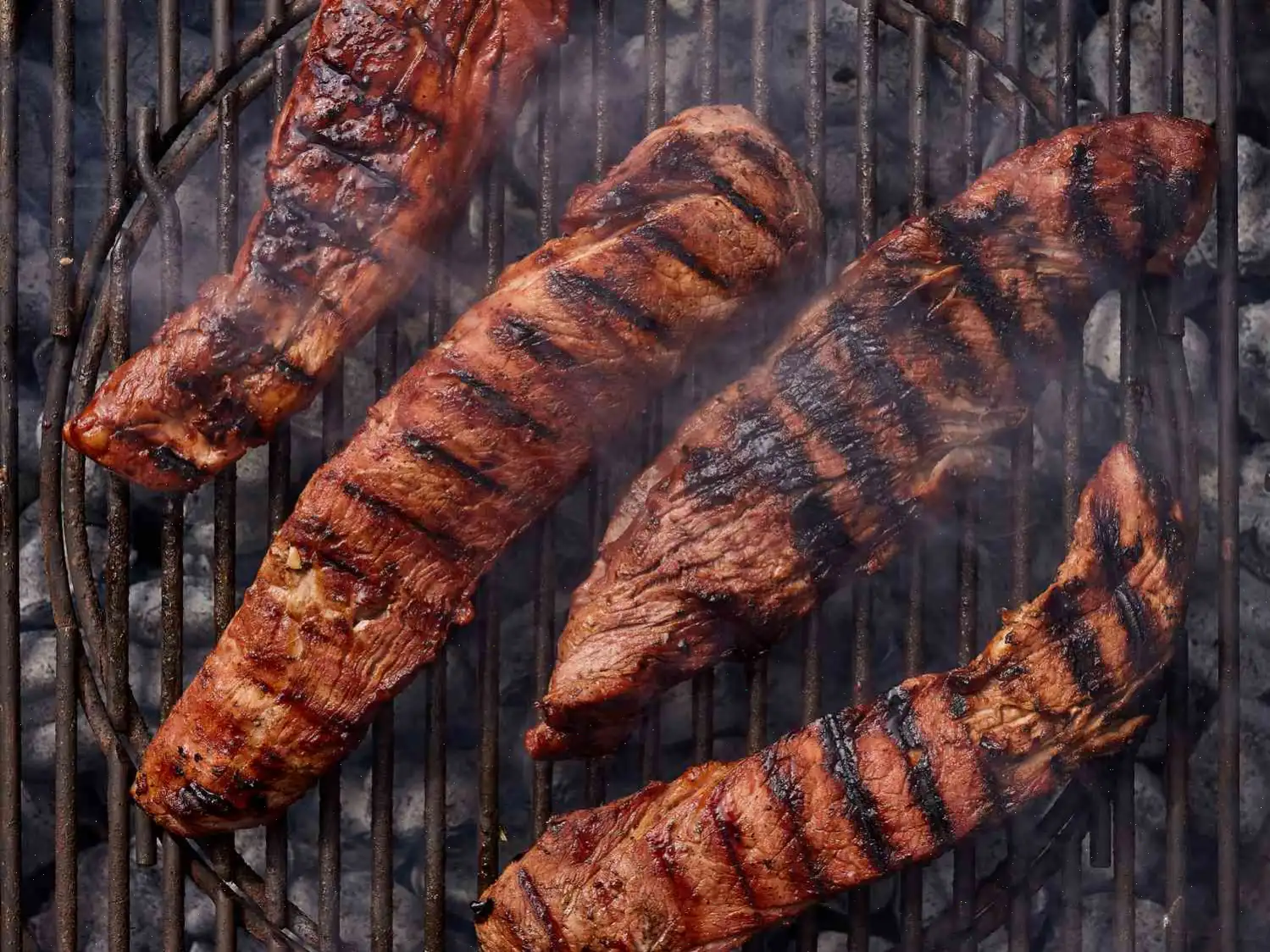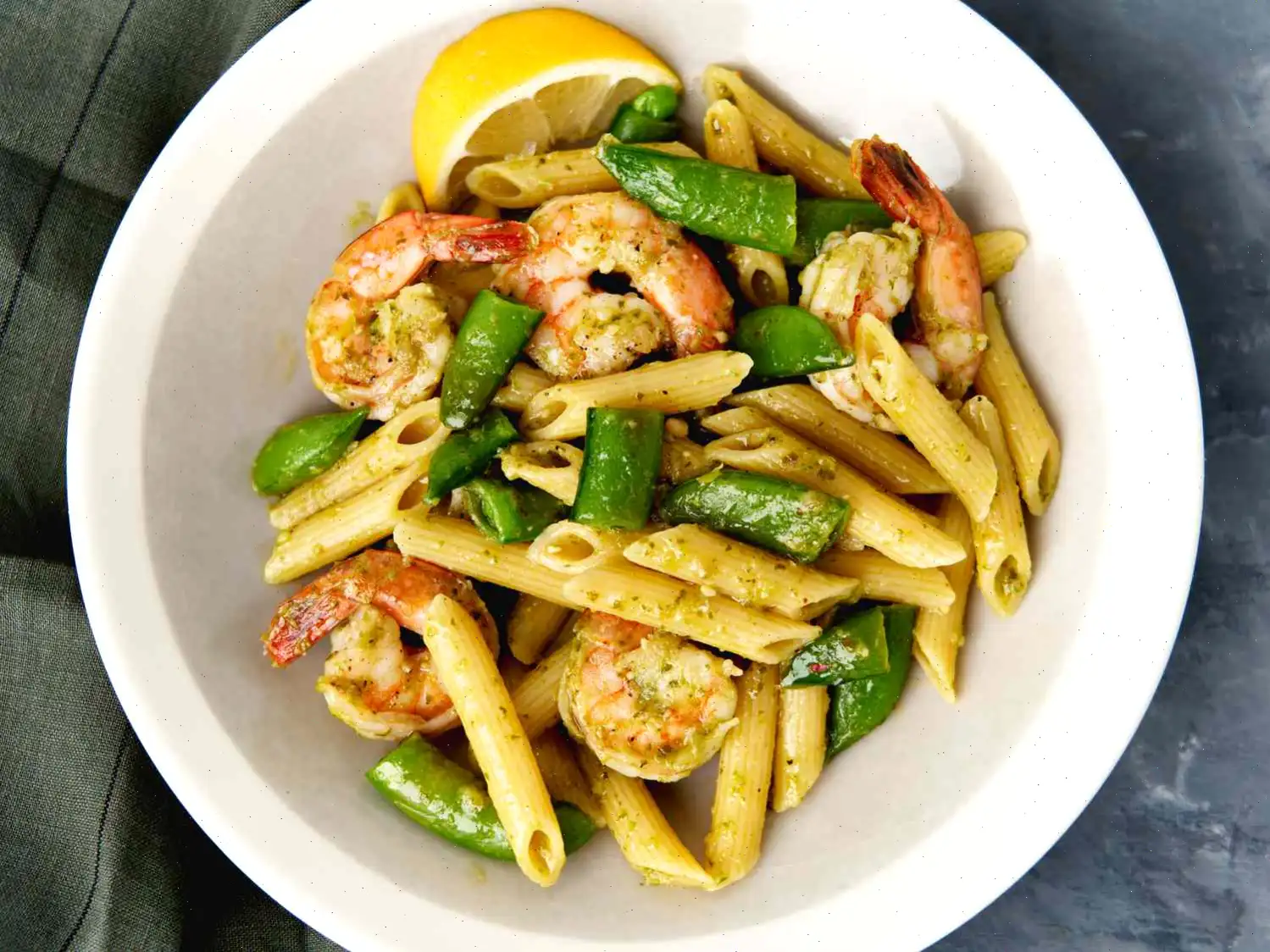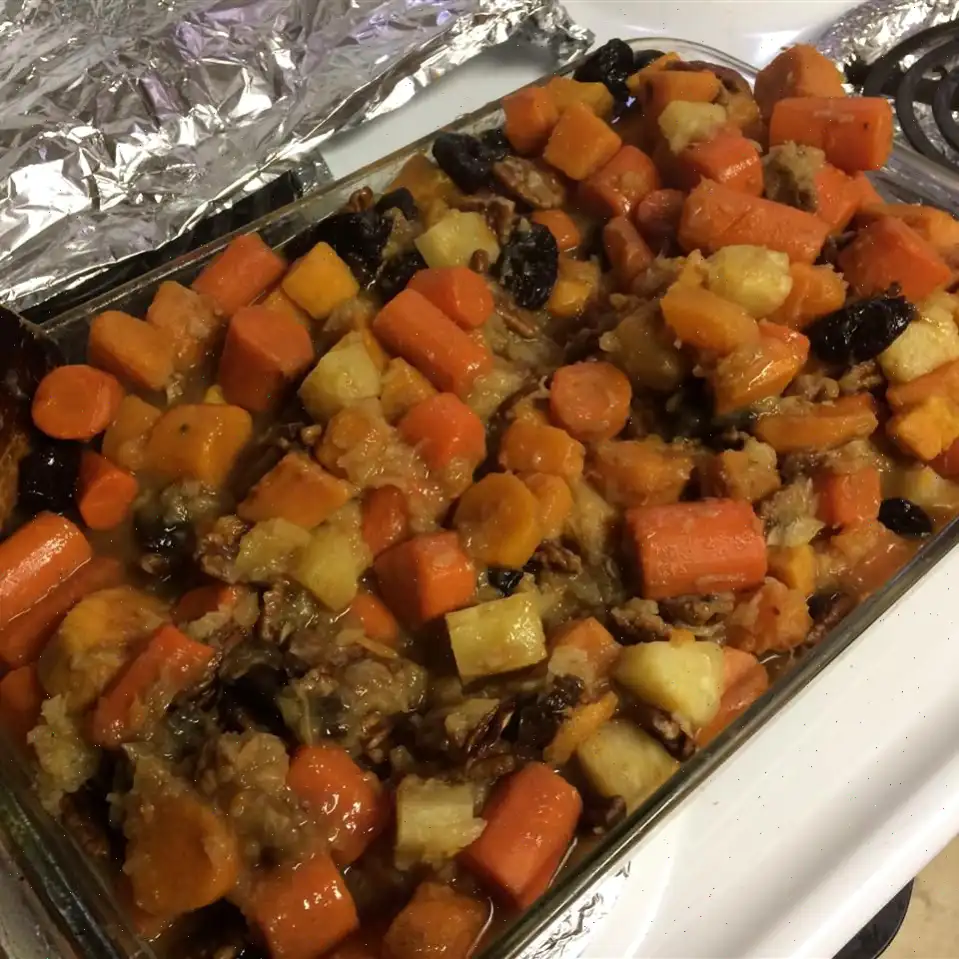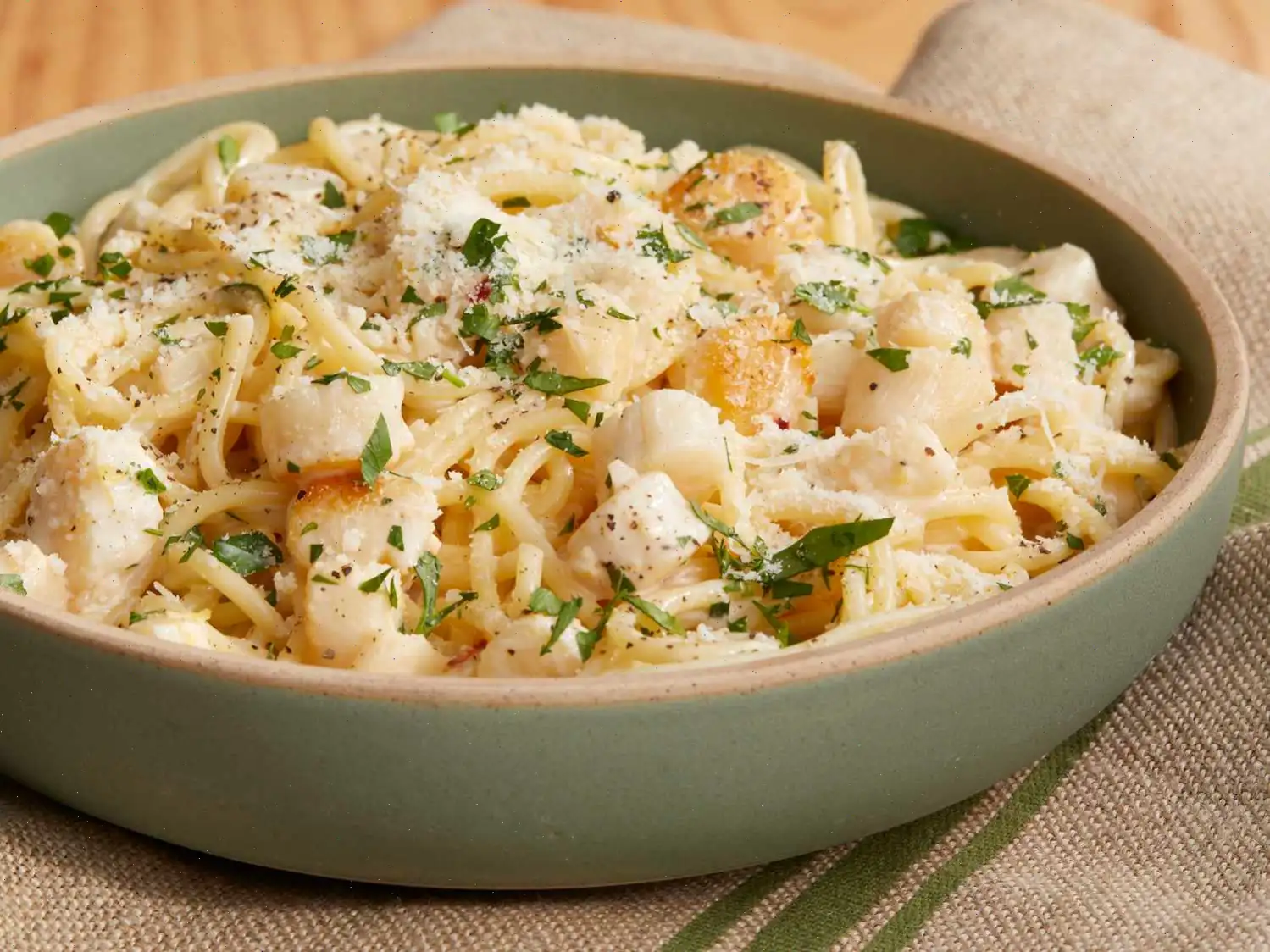
Char Siu (Chinese BBQ Pork) Recipe
Char siu pork is a mouthwatering Chinese barbecue dish known for its deliciously balanced sweet and savory flavor. With a mix of soy sauce, honey, rice wine, brown sugar, and spices, this recipe creates a perfect glaze for tender pork tenderloin. Below are the steps to prepare this flavorful dish, along with tips on serving, storing, and freezing char siu pork.
Ingredients
To create the unique sweet and savory flavor of char siu, youll need the following ingredients:
- Marinade: cup soy sauce, cup honey, cup ketchup, cup brown sugar, cup Chinese rice wine, 2 tablespoons hoisin sauce, 2 tablespoons red bean curd (optional), 1 teaspoon Chinese five-spice powder (optional)
- Pork: 2 (1 lb) pork tenderloins
Directions
Step 1: Gather all your ingredients to ensure you have everything at hand for the recipe.
Step 2: In a saucepan over medium-low heat, combine soy sauce, honey, ketchup, brown sugar, rice wine, hoisin sauce, red bean curd (if using), and five-spice powder. Stir the ingredients together and cook for about 2 to 3 minutes until theyre well mixed and just warmed through.
Step 3: While the marinade is warming, slice the pork tenderloins into 1 to 2-inch-thick strips.
Step 4: Place the pork strips into a large resealable plastic bag. Pour the marinade over the pork, seal the bag, and gently massage it to coat the meat evenly. Let it marinate in the refrigerator for at least 2 hours, but ideally overnight to fully infuse the flavors.
Step 5: Preheat your charcoal grill to medium-high heat and lightly oil the grate to prevent sticking.
Step 6: Remove the pork from the marinade and shake off any excess liquid. Set aside the remaining marinade for basting the pork while it cooks.
Step 7: Arrange the hot coals into two piles on opposite sides of the grill, leaving the center clear. Place a small of water on the grill for moisture. Position the pork strips in the center for indirect grilling.
Step 8: Cook the pork over indirect heat, turning the strips regularly and basting with the reserved marinade. Use an instant-read thermometer to check that the pork reaches an internal temperature of at least 145F (63C), which should take about 30 minutes or longer depending on your grill.
Step 9: Once the pork is cooked through, remove it from the grill and let it rest for a few minutes before serving.
Step 10: Serve the char siu pork hot, either on its own, over rice, or alongside steamed vegetables for a balanced meal.
Serving Suggestions
Char siu is versatile and can be served in many ways. Enjoy it as a stand-alone dish, paired with rice, or use it to stuff steamed buns for a delicious twist. It also works wonderfully in pork fried rice or stir-fries.
How to Store and Freeze Char Siu
Storage: Leftover char siu can be stored in an airtight in the refrigerator for up to 3 days. To reheat, simply place the pork on foil and bake in a 350F (175C) oven until warmed through.
Freezing: If you want to store char siu for a longer period, it can be frozen for up to 1 month. Just place the leftover pork strips in a freezer bag, remove as much air as possible, and freeze. To thaw, place the pork in the refrigerator overnight.
Recipe Tips
If you cant find red bean curd, you can substitute with red food coloring to achieve a similar appearance. To cook over indirect heat on a gas grill, simply turn off the center burner and cook the pork over the remaining burners, which will provide indirect heat for a delicious result.
Nutrition Facts
Each serving of char siu pork (based on 4 servings) provides approximately:
- Calories: 483
- Fat: 9g
- Carbs: 54g
- Protein: 44g
- Sodium: 2250mg
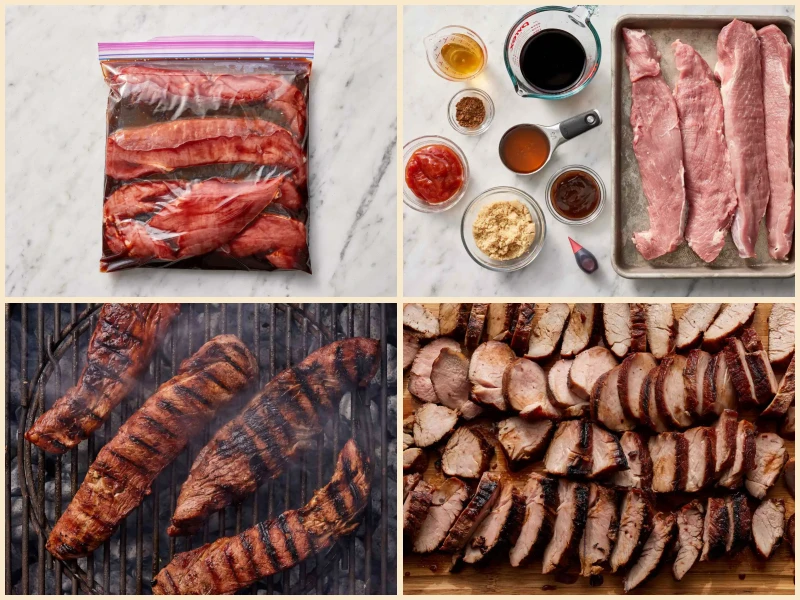
You can listen to this recipe in AI audio format. Simply click the play button below to listen to the content in a format that suits you best. It’s a great way to absorb information on the go!
FAQ about Char Siu (Chinese BBQ Pork) Recipe
Comments
Raymond Anderson
06/14/2024 10:19:52 PM
I really enjoy this recipe and have prepared it on three occasions, making some adjustments the subsequent times. Here are some of my observations: For Char Siu, the Chinese traditionally use pork butt because the fat content is a crucial component of the authentic flavor. In my attempts, I used tenderloin for the initial cook, pork sirloin roast for the second, and pork shoulder for the latest one. The pork shoulder, being fattier, yielded a better taste and juiciness, although it is understandably less healthy. While I prefer the vibrant red hue of char siu, I regretfully used the full 2 tablespoons of food coloring initially, which turned out to be excessive. Reducing it to 1 tablespoon for the subsequent try was still too much and ended up staining my cutting board. Considering the health implications of food coloring, I recommend significantly decreasing the amount used, or even better, opting for red bean paste or boiled down beets for coloring. Another aspect to be cautious of is the five-spice powder, as it can easily overpower the dish. I recommend sticking to 1/2 teaspoon or less to maintain a balanced flavor profile. It's essential to set aside 1/2 cup of the marinade for basting before sealing the meat in the bag, and marinating it for at least overnight to allow the flavors to penetrate adequately. Avoid overcooking by monitoring the temperature and removing the meat at 145 degrees, then allowing it to rest. Using a water pan is advisable for leaner cuts. Since a whole butt roast yields a substantial amount, I portion it out and freeze extras for future use. Recently, I prepared Char Siu, doufu, fan (BBQ pork tofu over rice) using bean paste as the primary seasoning, which turned out delicious.
Mark Edwards
12/17/2024 01:42:27 AM
I absolutely adore cooking this dish on the grill. Recently, I've been feeling a bit lazy and decided to broil it in my toaster oven instead. I followed the marinade recipe, placed the pork in a ziplock bag, and accidentally marinated it for at least 3 days, which turned out to make it even more flavorful. The only change I made was using teriyaki sauce instead of soy sauce, giving it a sweeter taste with less saltiness. I'm not a fan of ketchup, so I opted for Sweet Baby Ray's BBQ sauce and reduced the amount of brown sugar. I usually don't measure all the ingredients precisely, but my estimates are usually pretty accurate. I couldn't really discern much of a difference between broiling in the toaster oven and grilling on a gas grill. Broiling for 15 minutes resulted in a beautifully glazed finish in the toaster oven, and there was no need to flip the pork, making clean-up and cooking time a breeze. However, when I need to cook a large quantity for a group, I prefer to use a charcoal grill as it elevates the dish to a whole new level.
Thomas Thomas
12/02/2022 10:45:28 AM
I skipped the ketchup and brown sugar and added fermented red bean curd (3 chunks) and 1/2 cup of dark Chinese cooking wine. I cooked it at BBQ-275 for 1/2 hour, then turned and cooked for another 20 minutes. I also placed a cup of water inside the BBQ.
Betty Flores
02/01/2024 10:52:36 AM
This recipe was fantastic! I grilled the meat over medium-high heat to get a nice char, then turned off all but one burner and cooked the meat indirectly. Placing a dish of water over the active burner helped keep the pork juicy. The result was incredibly tasty!
Jose Smith
08/27/2022 11:43:10 AM
This dish is always a hit! I simmer the extra marinade until it thickens into a delicious sauce to drizzle over the meat before serving.
Joseph Mitchell
01/20/2024 11:58:53 AM
Great recipe! Just a tip: avoid basting with the marinade that was used for raw meat. It's better to prepare extra marinade and keep it separate. Alternatively, you can cook the leftover marinade from the bag by placing it in a saucepan with 1/2 cup of water and reducing it for a delicious sauce.


